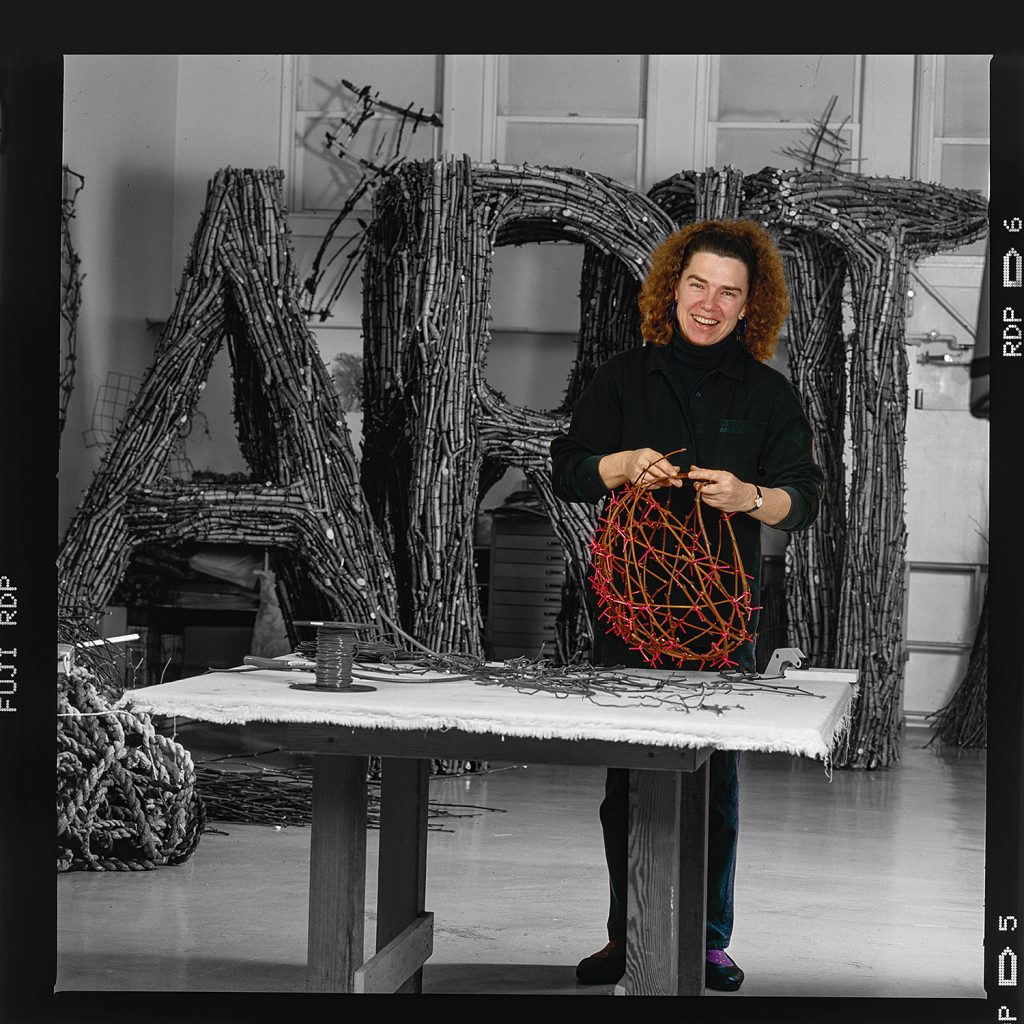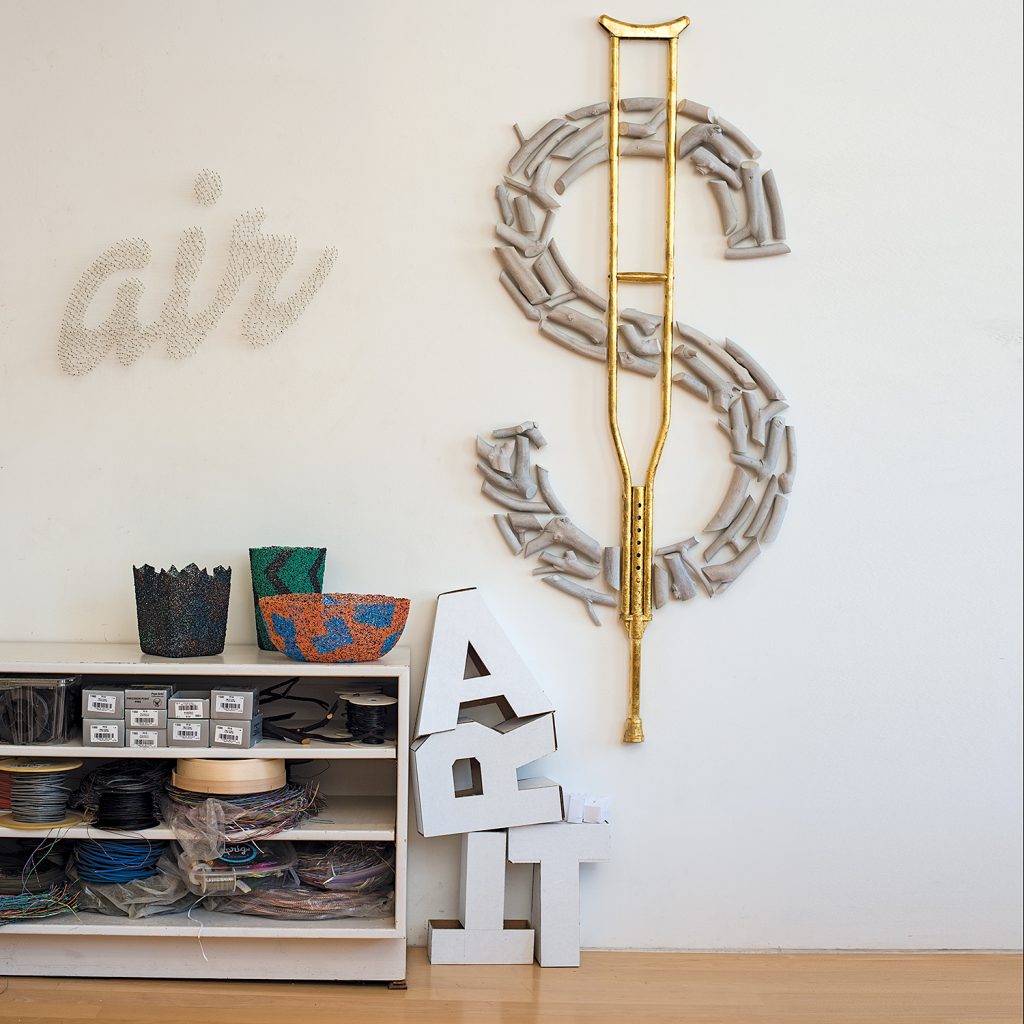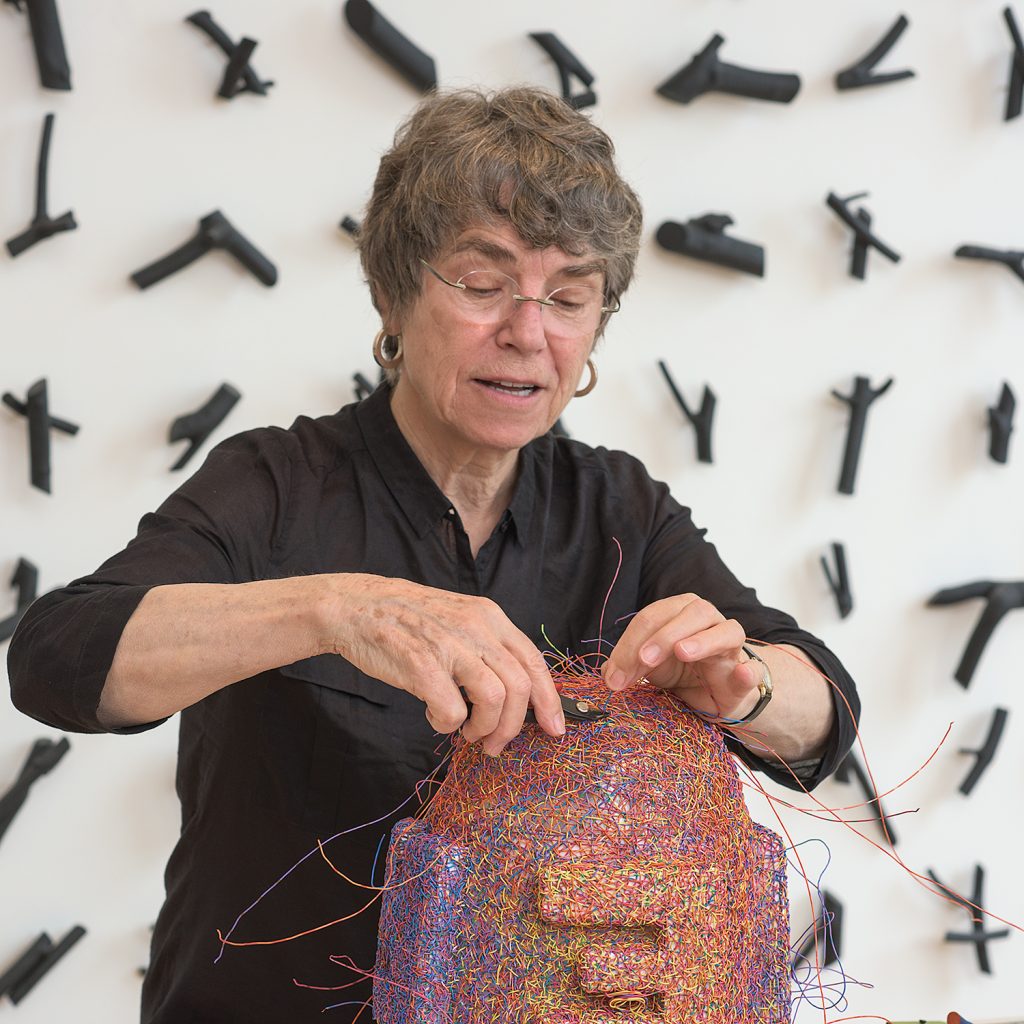From City Tree Trimmings to Industrial Harvest, Artist Gyöngy Laky’s Textile Architecture Addresses Contemporary Environmental Issues
Kristina Ratliff and Ryan Urcia

While many artists work conceptually to inspire awareness and address issues of climate change, artists of Fiber Art and Modern Craft have a unique and inherently harmonious relationship with the environment, from their intimate use of natural materials to the fundamentally “slow art” process of hand craftsmanship.
In terms of the materials they use, they most often come from the earth, from private garden cultivation and harvesting to regional sourcing of plant life – such as bamboo, willow and cedar, and their earthy “scraps” such as branches, grasses, bark and twigs – impress an intrinsic awareness of the origin of things. This, coupled with the preservation of age-old techniques such as weaving, knotting, tying and bundling, earn these creatives rightful acclaim as stewards at the interconnection of art and nature.

San Francisco-based artist Gyöngy Laky (most people call her Ginge, with a soft “g”) is known for her sculptural vessels, typographical wall sculptures, and site-specific outdoor works composed of materials harvested from nature — such as wood gleaned from orchard pruning, park and garden trimmings, street trees and forests of California — and discarded objects she considers “industrial harvest” such as recycled materials and post-consumer bits from surplus such as screws, nails, telephone wire.
“These annually renewable linear elements are regarded as discards,” Laky notes. “In my studio practice, however, they are employed as excellent and hardy materials.”

Born in Hungary in 1944, the physical and emotional effects of war impacted Laky from a very young age and her works often have underlying themes of opposition to war and militarism as well as climate change and the environment, gender equality. Her family emigrated to the US in 1949, resettling in Ohio, Oklahoma and eventually, California.
“After escaping the ravages of war as refugees,” she remembers, Nature’s embrace slowly healed my family,”

As a professor at the University of California, Davis for 28 years, Laky was instrumental in developing Environmental Design as an independent department (now the Department of Design). Here, she became fascinated by grids, latticework, tensile structures, strut-and-cable construction and other architectural and engineering linear assemblages. Coupled with her extensive background in textiles, she uses hand-construction techniques based in textile work to build sculptures invigorated by her attraction to the human cleverness of building things. She calls this discipline “Textile Architecture”.
“The vertical and horizontal elements of textile technology – ubiquitous in textile constructions of all sorts – underpins so much of human ingenuity about making things and led us, eventually, to the age of computers. In the context of a personal examination of our complex relationship with the world around us, my work often combines materials sourced from nature with screws, nails or ‘bullets for building’ (as the drywall screws I like are, ironically, called). The incongruity of hardware protruding from branches hints at edgy relationships as well as the flux of human interaction with nature,” says Laky.
Laky is also known for her outdoor and temporary site-specific installations, including land art works in Italy, which have all addressed nature and environmental sustainability issues. In 2008, she was commissioned by The New York Times to create sculptures for their “green” issue dedicated to Earth Day. This cover work, titled Alterations, contrasts natural apple wood and grapevine with rough industrial materials, tenuously joined by metal screws, nails, bullets and wire which figuratively, literally and symbolically represent direct and subtle messages about the interdependence of man and nature.
Laky’s works are in the permanent collections of museums including MoMA in New York, Philadelphia Museum of Art, and Smithsonian. She has had solo exhibitions at Officinet Gallery, Danish Arts and Crafts Association in Copenhagen and Royal Institute of British Architects Gallery, Manchester, and has shown at San Francisco Museum of Art, Renwick Gallery, De Young Museum, and International Biennial of Tapestry in Lausanne, to name a few. She is the recipient of the National Endowment for the Arts Grant and a fellow of American Craft Council. For a full list visit browngrotta.com.
For the upcoming exhibition Volume 50: Chronicling Fiber Art for Three Decades at browngrotta arts in Wilton, CT (September 12-20), Laky continues her personal examination of the complex relationships we have with the world around us and will be presenting three works – Deviation, We Turn and Traverser.

Laky’s typographical wall sculpture, Deviation, is made of apple trimmings, acrylic paint and screws. It portrays many meanings, from functioning like diacritical marks representing “Oh, Why?” to the myriad implications and emotions of the word “Oy” – the Yiddish word meaning woe, dismay or annoyance – or, if flipped, “Yo” – a slang salutation for “hello” or representing “good luck” rolling an 11 in the game of craps, the only number that always wins.
See more in our exhibition, Volume 50: Chronicling Fiber Art for Three Decades at browngrotta arts in Wilton, CT (September 12-20), http://www.browngrotta.com/Pages/calendar.php
